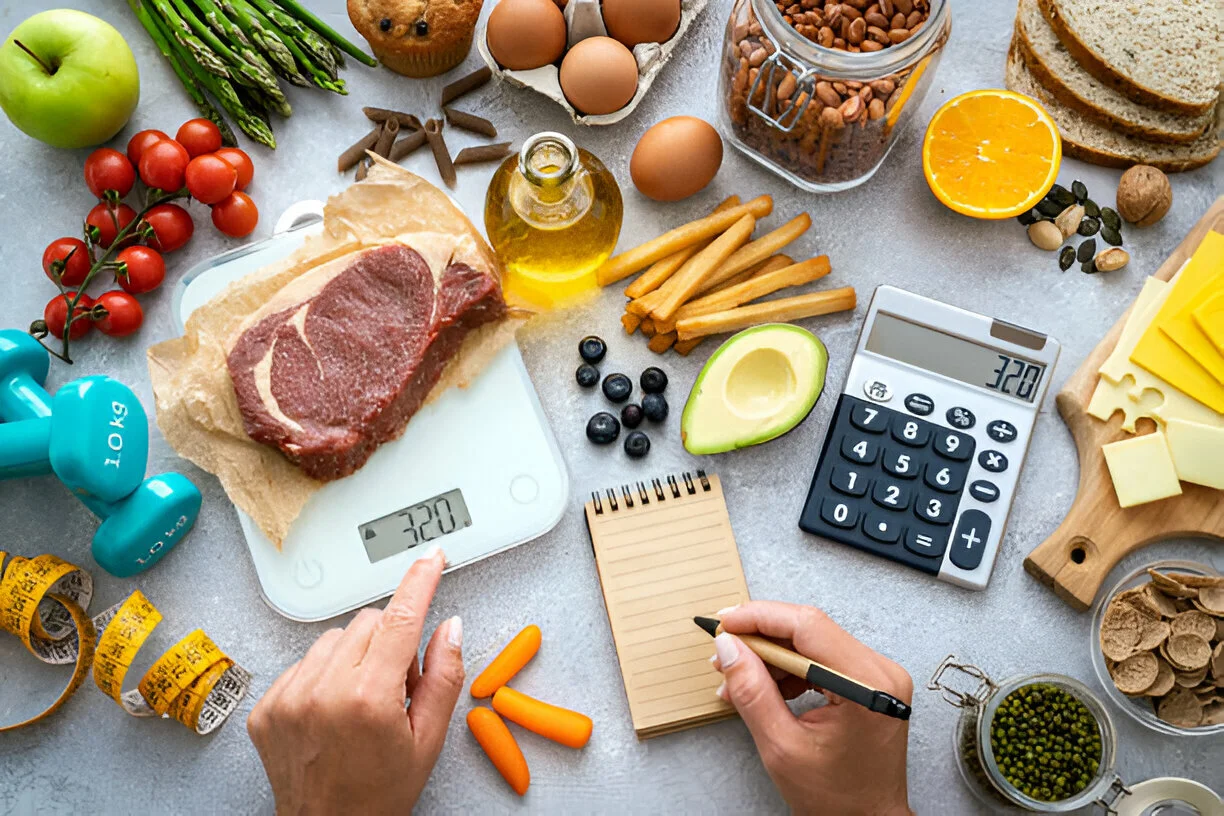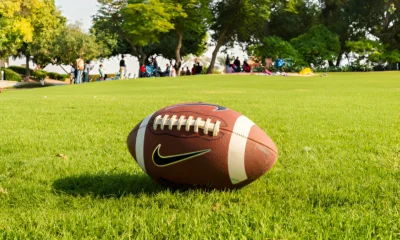Food
How to Choose the Right Wellness Dog Food: An 2024 Comprehensive Overview

Table of Contents
Introduction
In the world of canine care, nutrition plays a pivotal role in maintaining optimal health and wellness. Transitioning to wellness dog food can significantly impact your dog’s overall well-being, from digestion to energy levels. This guide aims to provide a comprehensive overview of wellness food, covering its definition, benefits, selection criteria, and debunking common myths.
Understanding Wellness Dog Food
Wellness dog food is crafted to meet dogs’ nutritional needs with high-quality ingredients. These formulations typically feature balanced proportions of protein, carbohydrates, fats, and essential vitamins and minerals. Protein sources like chicken, lamb, or fish support muscle development and repair. Carbohydrates from grains or vegetables provide sustained energy, while fats and oils contribute to skin health and a shiny coat. Some varieties include dry kibble, wet canned food, raw options, and grain-free alternatives tailored to different dietary preferences.
Key Ingredients and Their Benefits
- Protein Sources: High-quality protein is essential for dogs’ muscle development, repair, and overall health. Look for sources like chicken, turkey, beef, lamb, or fish in wellness dog foods.
- Carbohydrates: Whole grains like brown rice, oats, and barley provide dogs with energy and essential nutrients. Some dogs benefit from grain-free options that use alternative carbohydrate sources like sweet potatoes or peas.
- Fats and Oils: Omega-3 and Omega-6 fatty acids are crucial for maintaining healthy skin and coat. Wellness dog foods often include sources like fish oil, flaxseed, or chicken fat to support skin health.
- Vitamins and Minerals: Wellness dog foods are fortified with essential vitamins (such as A, D, E, and B-complex) and minerals (like calcium, phosphorus, and zinc) to support overall health and immune function.
Different Varieties and Formulations
- Dry Food: Convenient and easy to store, dry kibble helps maintain dental health and is often nutrient-dense.
- Wet Food: Canned wet food contains higher moisture content, making it a good option for dogs who need additional hydration or have dental issues.
- Raw Food: Raw dog food diets focus on uncooked, minimally processed ingredients and are believed to mimic a dog’s ancestral diet.
- Grain-Free Options: Grain-free dog foods substitute grains with alternative carbohydrate sources like sweet potatoes or legumes. This can be beneficial for dogs with grain sensitivities.
Benefits of Wellness Dog Food
Switching to wellness dog food can yield numerous benefits for your canine companion. Improved digestion and nutrient absorption are common advantages, promoting better overall health. Dogs often experience enhanced energy levels, supporting increased vitality and playfulness. Controlled portions aid in maintaining healthy weight and muscle mass, crucial for long-term health. Moreover, certain formulations can offer targeted support for specific health conditions, such as joint health or sensitive skin. A glossy coat and healthy skin are visible signs of a well-balanced diet.
How to Choose the Right Wellness Dog Food
Selecting the right wellness food requires careful consideration of your dog’s unique needs. Factors such as age, size, breed, and existing health conditions influence dietary requirements. Understanding ingredient labels and consulting with veterinarians or nutritionists can guide your decision-making process. It’s essential to introduce new food gradually and monitor your dog’s response closely for any adverse reactions.
Common Myths and Misconceptions
Despite popular beliefs, not all “natural” dog foods are automatically healthier. Likewise, grain-free options may not suit all dogs, and a high price tag doesn’t always guarantee quality. Each dog has unique nutritional needs, and there’s no one-size-fits-all approach to dog food selection.
Tips for Transitioning to Wellness Dog Food
Transitioning to wellness food requires patience and a systematic approach. Mix new food with the existing diet gradually to avoid digestive upset. Positive reinforcement can encourage acceptance, and close observation helps detect any allergies or sensitivities early on.
Case Studies and Success Stories
Real-life experiences from dog owners highlight the transformative impact of wellness dog food. Before-and-after transformations showcase the visible improvements in dogs’ health and vitality. Testimonials from veterinarians and experts provide additional insights into the benefits of tailored nutrition.
Conclusion
In conclusion, prioritizing your dog’s nutrition through wellness dog food can lead to profound improvements in their quality of life. From improved digestion to healthier skin and coat, the benefits are undeniable. I encourage all pet owners to prioritize canine nutrition, consult with professionals, and make informed choices to enhance their dog’s wellness journey through nutrition. Let’s ensure our furry friends live their best lives with the right diet and care.
Food
The Ultimate Guide to Losing Weight Fast, Naturally, and Permanently following 8 strategies

Table of Contents
I. Introduction
A. The Common Struggle: Why Losing Weight Fast, Naturally, and Permanently Is Sought After
Many people face the daunting challenge of losing weight quickly, naturally, and permanently. The desire for rapid results often clashes with the need for sustainable, healthy practices. Achieving this balance is crucial, yet elusive for many, prompting the search for effective strategies.
B. Understanding the Importance of a Sustainable Approach to Weight Loss
A sustainable approach of Losing Weight not only ensures that the weight comes off but stays off. This means focusing on long-term habits rather than short-term fixes, which often lead to rebound weight gain. By prioritizing sustainable methods, you can achieve lasting health benefits.
C. Brief Overview of What the Blog Will Cover
In this guide, we’ll cover realistic goal setting of losing Weight, healthy eating habits, the role of physical activity, stress and sleep management, hydration, the pitfalls of fad diets, the importance of support and accountability, and tracking progress.
II. Setting Realistic Goals to Losing Weight
A. The Significance of Setting Achievable Goals
Setting realistic goals is the first step toward successful Losing Weight. Achievable goals help maintain motivation and provide a clear path forward, making the journey manageable and less overwhelming.
B. SMART Goal-Setting Technique to Losing Weight
Using the SMART goal-setting technique to Losing Weight can be particularly effective. This method involves setting Specific, Measurable, Achievable, Relevant, and Time-bound goals. For example, instead of saying “I want to lose weight,” specify “I aim to lose 10 pounds in three months by exercising three times a week and eating more vegetables.”
C. Identifying Your Motivation for Weight Loss
Understanding your personal motivation for losing weight is crucial. Whether it’s improving health, boosting self-confidence, or increasing energy levels, identifying your “why” helps keep you focused and committed.
III. Establishing Healthy Eating Habits
A. Importance of Balanced Nutrition for Sustainable Weight Loss
Balanced nutrition is key to losing weight naturally and permanently. A diet rich in fruits, vegetables, lean proteins, and whole grains provides the necessary nutrients to fuel your body and support weight loss.
B. Creating a Personalized Meal Plan
Creating a personalized meal plan tailored to your dietary preferences and nutritional needs helps ensure consistency. Including a variety of healthy foods prevents boredom and promotes adherence.
C. Incorporating Whole Foods and Minimizing Processed Foods
Whole foods, such as fresh produce, lean meats, and whole grains, are nutrient-dense and support weight loss. Minimizing processed foods, which are often high in added sugars and unhealthy fats, can significantly improve your diet quality.
D. Portion Control and Mindful Eating Techniques
Portion control and mindful eating are essential strategies. Using smaller plates, paying attention to hunger cues, and savoring each bite can help prevent overeating and foster a healthier relationship with food.
IV. Prioritizing Physical Activity
A. Finding Enjoyable Forms of Exercise
Regular physical activity is crucial for weight loss. Finding forms of exercise you enjoy, whether it’s dancing, hiking, or swimming, makes it easier to stick with a routine.
B. Incorporating Both Cardio and Strength Training
Combining cardiovascular exercise with strength training maximizes weight loss. Cardio burns calories, while strength training builds muscle, which can increase metabolism.
C. Tips for Staying Consistent with Exercise Routine
Staying consistent with your exercise routine can be challenging. Setting a schedule, finding a workout buddy, and setting small, attainable goals can help maintain motivation.
D. Importance of Daily Movement Outside of Formal Exercise
In addition to structured workouts, incorporating more movement into your daily life, such as walking during breaks or taking the stairs, contributes to overall calorie expenditure.
V. Managing Stress and Sleep
A. The Impact of Stress on Weight Loss Efforts
Stress can significantly hinder weight loss efforts by triggering emotional eating and disrupting metabolism. Managing stress is essential for a successful weight loss journey.
B. Strategies for Stress Management Such as Meditation and Yoga
Effective stress management strategies include meditation, yoga, and deep breathing exercises. These practices help calm the mind and reduce the physiological impact of stress.
C. The Importance of Quality Sleep in Weight Management
Quality sleep is often overlooked but is vital for weight management. Poor sleep can affect hormones that regulate hunger and appetite, leading to weight gain.
D. Tips for Improving Sleep Hygiene
Improving sleep hygiene involves creating a restful environment, maintaining a regular sleep schedule, and avoiding stimulants like caffeine before bed. These practices can enhance sleep quality and support weight loss.
VI. Hydration and Its Role in Weight Loss
A. Understanding the Link Between Hydration and Metabolism
Staying hydrated is essential for an efficient metabolism. Water helps transport nutrients, regulate body temperature, and facilitate digestion, all of which support weight loss.
B. Recommended Daily Water Intake
Aim for at least 8 cups (64 ounces) of water daily, but individual needs may vary based on activity level, climate, and overall health. Listening to your body’s thirst cues is also important.
C. Strategies for Staying Hydrated Throughout the Day
Carrying a water bottle, setting reminders to drink, and consuming water-rich foods like fruits and vegetables can help maintain proper hydration.
VII. Avoiding Fad Diets and Quick Fixes
A. The Dangers of Fad Diets and Their Unsustainable Nature
Fad diets often promise quick results but are typically unsustainable and nutritionally unbalanced. They can lead to nutrient deficiencies and rebound weight gain once normal eating resumes.
B. Why Quick Fixes Often Lead to Rebound Weight Gain
Quick fixes often involve severe calorie restriction or eliminating entire food groups, which are not sustainable long-term. Once you return to regular eating patterns, the weight tends to come back.
C. Focus on Long-Term Lifestyle Changes Instead
Instead of chasing quick fixes, focus on making long-term lifestyle changes. Incorporating healthy habits gradually ensures they become a permanent part of your routine.
VIII. Seeking Support and Accountability
A. The Benefits of Having a Support System
Having a support system can significantly enhance your weight loss efforts. Friends, family, or a weight loss group can provide encouragement, share experiences, and help keep you accountable.
B. Finding a Weight Loss Buddy or Joining a Community
A weight loss buddy or community can offer mutual support and motivation. Sharing goals and progress with others creates a sense of accountability and shared purpose.
C. Using Apps and Trackers for Accountability
Numerous apps and trackers can help monitor your food intake, exercise, and progress. These tools provide insights and help maintain accountability.
IX. Tracking Progress and Adjusting Accordingly
A. The Importance of Monitoring Progress Beyond the Scale
While the scale is one measure of progress, it shouldn’t be the only one. Tracking other indicators such as body measurements, fitness levels, and how clothes fit provides a more comprehensive view of your progress.
B. Celebrating Small Victories Along the Way
Celebrating small victories, like fitting into a smaller clothing size or completing a fitness goal, keeps you motivated and reinforces positive behavior.
C. Being Flexible and Adjusting Strategies as Needed
Flexibility is crucial in any weight loss journey. If a particular strategy isn’t working, be willing to adjust your approach. This adaptability ensures you stay on track toward your long-term goals.
X. Conclusion
A. Recap of Key Points
Achieving weight loss fast, naturally, and permanently involves setting realistic goals, adopting healthy eating habits, prioritizing physical activity, managing stress and sleep, staying hydrated, avoiding fad diets, seeking support, and tracking progress.
B. Encouragement for Embarking on a Sustainable Weight Loss Journey
Embarking on a sustainable weight loss journey is challenging but rewarding. The changes you make will not only help you lose weight but also improve your overall health and well-being.
C. Final Thoughts and Words of Motivation
Remember, lasting weight loss is a marathon, not a sprint. Stay committed, be patient with yourself, and celebrate every step forward. With the right mindset and strategies, you can achieve your weight loss goals naturally and permanently.
Food
Your Roadmap to Success: A 7-Day Diet Plan for Effective Weight Loss

Table of Contents
Introduction
Setting the Stage: The Importance of a Balanced Diet
Embarking on a weight loss journey is as much about changing your mindset as it is about changing your diet. A balanced diet is crucial for maintaining overall health and achieving effective weight loss diet. It ensures that your body gets the right mix of nutrients, helping you feel energized and satisfied throughout the day. This 7-day diet plan is designed to guide you towards healthier eating habits, making weight loss a sustainable and enjoyable process.
Understanding Weight Loss diet: The Role of Diet in Achieving Your Goals
Weight loss diet is fundamentally about creating a calorie deficit, where you consume fewer calories than you burn. However, not all calories are created equal. Focusing on nutrient-dense foods rather than empty calories from processed foods can make a significant difference in how you feel and how your body responds. This plan prioritizes whole foods that provide essential vitamins, minerals, and fiber, helping you lose weight without feeling deprived.
The 7-Day Challenge: A Step Towards a Healthier You
The 7-day diet plan is more than just a temporary fix. It’s a starting point for adopting healthier eating habits that can last a lifetime. Each day is carefully planned to include balanced meals and snacks that will keep you satisfied, energized, and on track towards your weight loss diet goals.
Day 1: Kickstarting Your Journey
Breakfast: Energizing Options to Start Your Day Right
Begin your day with a breakfast that sets the tone for success. Consider a smoothie made with spinach, banana, almond milk, and a scoop of protein powder. Alternatively, oatmeal topped with fresh berries and a sprinkle of chia seeds provides a fiber-rich start.
Lunch: Fueling Your Afternoon with Satisfying Choices
For lunch, opt for a quinoa salad with mixed greens, cherry tomatoes, cucumber, and grilled chicken. Drizzle with a light lemon vinaigrette to keep it fresh and flavorful.
Dinner: Ending the Day on a Light Note
Dinner should be light yet satisfying. Try baked salmon with a side of steamed broccoli and quinoa. The healthy fats in salmon and fiber in the vegetables will keep you full and satisfied.
Day 2: Building Momentum
Breakfast: Continuing with Nutrient-Rich Selections
Keep the momentum going with a nutrient-rich breakfast. A veggie omelet made with egg whites, spinach, bell peppers, and tomatoes is a great option. Pair it with a slice of whole-grain toast for added fiber.
Mid-Morning Snack: Keeping Hunger at Bay
A handful of almonds or a piece of fruit like an apple or banana can help bridge the gap between breakfast and lunch, providing energy and curbing hunger.
Lunch: Incorporating Variety for Taste and Nutrition
For lunch, try a turkey and avocado wrap using a whole-grain tortilla. Add plenty of vegetables like lettuce, tomato, and cucumber for added crunch and nutrition.
Afternoon Snack: Healthy Alternatives for Sustained Energy
Greek yogurt with a drizzle of honey and a handful of nuts makes a perfect afternoon snack, offering a mix of protein and healthy fats to keep your energy levels stable.
Dinner: Exploring Flavorful yet Low-Calorie Options
End your day with a flavorful stir-fry. Use lean protein like chicken or tofu, and plenty of vegetables like bell peppers, snap peas, and carrots. Serve over brown rice or cauliflower rice to keep it low-calorie.
Day 3: Finding Your Groove
Breakfast: Adding a Dash of Creativity to Your Morning Routine
Switch things up with a smoothie bowl. Blend your favorite fruits with some Greek yogurt and top with granola, fresh berries, and a sprinkle of flax seeds.
Mid-Morning Snack: Filling in Nutritional Gaps
Carrot sticks with hummus are a great way to add more veggies to your diet while providing protein and healthy fats from the hummus.
Lunch: Making Smart Choices for Lasting Satisfaction
A hearty salad with mixed greens, roasted sweet potatoes, chickpeas, avocado, and a tahini dressing makes for a satisfying and nutritious lunch.
Afternoon Snack: Nourishing Your Body Between Meals
Keep it simple with a protein bar that’s low in sugar but high in protein and fiber to keep you feeling full until dinner.
Dinner: Embracing Lighter Fare without Sacrificing Flavor
Enjoy a vegetable soup packed with a variety of veggies like zucchini, carrots, tomatoes, and spinach. Pair with a side of whole-grain bread.
Day 4: Overcoming Challenges
Breakfast: Keeping Things Fresh and Exciting
A chia pudding made the night before with almond milk, chia seeds, and a touch of vanilla can be a refreshing and nutritious start to your day. Top with fresh fruit in the morning.
Mid-Morning Snack: Choosing Snacks Wisely for Longevity
A small handful of mixed nuts can provide a quick and satisfying snack that’s rich in healthy fats and protein.
Lunch: Resisting Temptation with Smart Substitutions
Opt for a grilled chicken salad with a variety of colorful veggies and a light balsamic dressing. Avoid creamy dressings that add unnecessary calories.
Afternoon Snack: Satisfying Cravings with Healthy Alternatives
Apple slices with a tablespoon of peanut butter can satisfy sweet and salty cravings while providing fiber and protein.
Dinner: Innovating with Low-Calorie, High-Taste Meals
Try a baked eggplant parmesan using whole-grain breadcrumbs and a light marinara sauce. Serve with a side salad for a complete meal.
Day 5: Maintaining Consistency
Breakfast: Reinforcing Healthy Habits
A smoothie with kale, pineapple, coconut water, and a scoop of protein powder can help you start your day with a nutrient boost.
Mid-Morning Snack: Staying Focused on Your Goals
A small serving of cottage cheese with a few slices of fresh fruit can keep you focused and energized.
Lunch: Finding Balance Amidst Busy Schedules
A lentil soup with plenty of vegetables provides a hearty, balanced lunch that’s easy to prepare and take on the go.
Afternoon Snack: Navigating Through Potential Pitfalls
A rice cake topped with avocado and a sprinkle of sea salt can be a crunchy and satisfying afternoon snack.
Dinner: Celebrating Your Progress with Nourishing Dishes
Celebrate your progress with a lean steak salad, using mixed greens, cherry tomatoes, red onion, and a light vinaigrette.
Day 6: Pushing Through Plateaus
Breakfast: Refueling for the Final Stretch
A breakfast burrito with scrambled eggs, black beans, salsa, and avocado wrapped in a whole-grain tortilla can provide the energy you need.
Mid-Morning Snack: Keeping Your Eyes on the Prize
Keep it simple with a piece of fresh fruit like an orange or a handful of berries.
Lunch: Adapting to Your Body’s Changing Needs
A quinoa and black bean salad with plenty of vegetables and a lime vinaigrette can be both filling and nutritious.
Afternoon Snack: Managing Hunger Pangs with Smart Swaps
Celery sticks with almond butter can be a crunchy and satisfying snack that helps manage hunger.
Dinner: Reflecting on Your Journey with Wholesome Meals
End the day with a hearty but healthy dish like stuffed bell peppers filled with lean ground turkey, quinoa, and vegetables.
Day 7: Celebrating Success and Looking Ahead
Breakfast: Starting the Day with Gratitude and Reflection
Enjoy a comforting bowl of oatmeal topped with fresh berries, a drizzle of honey, and a sprinkle of nuts. Reflect on your journey and the progress you’ve made.
Mid-Morning Snack: Celebrating Your Achievements
A smoothie with your favorite fruits, a handful of spinach, and some chia seeds can be a refreshing mid-morning treat.
Lunch: Planning for Long-Term Success
A grilled vegetable and hummus wrap using a whole-grain tortilla can help you stay on track while planning for long-term success.
Afternoon Snack: Embracing Sustainable Eating Habits
Opt for a small bowl of mixed berries or a piece of dark chocolate to satisfy your sweet tooth in a healthy way.
Dinner: Indulging Moderately while Keeping Your Goals in Mind
End your week with a favorite meal in a healthier version, like a whole-grain pasta with a vegetable-rich marinara sauce and a side salad.
Conclusion
Reflecting on Your 7-Day Journey
Over the past week, you’ve taken significant steps towards a healthier lifestyle. Reflecting on your journey can help you appreciate the progress you’ve made and understand the positive changes in your eating habits.
The Power of Small Changes: How Consistency Leads to Lasting Results
Remember, weight loss diet and health are not about drastic changes but about consistent, small adjustments. These small changes add up over time, leading to lasting results.
Moving Forward: Implementing Lessons Learned for a Healthier Lifestyle
Use the lessons learned during this 7-day diet plan to continue making healthier choices. Whether it’s opting for nutrient-dense foods, keeping portion sizes in check, or finding healthier alternatives to your favorite meals, these changes can help you maintain your weight loss diet and live a healthier life.
By following this 7-day diet plan, you’ve set yourself on the path to success. Keep up the momentum, and you’ll continue to see progress and feel better every day.
Read more: What is the best weight loss calorie calculator for beginners with 6 easy ways?
Food
What is the best weight loss calorie calculator for beginners with 6 easy ways?

Table of Contents
Introduction
Setting the Scene: The Quest for Weight Loss
Embarking on a weight loss journey can be overwhelming, especially for beginners. With countless diets, workout plans, and conflicting advice, it’s easy to feel lost. One of the most effective strategies to navigate this journey is calorie counting. Understanding and managing your calorie intake can be a game-changer in achieving your weight loss goals.
The Importance of Calorie Counting
Calorie counting revolves around the concept of a calorie deficit, where you consume fewer calories than your body needs to maintain its current weight. This deficit forces your body to use stored fat for energy, leading to mass loss. A weight loss calorie calculator is an essential tool for anyone starting their mass loss journey, providing the precision and clarity needed to track your daily intake accurately.
The Basics of Weight Loss Calorie Calculators
What They Are
Weight loss calorie calculators are digital tools designed to estimate the number of calories you should consume daily to achieve your desired weight loss. They take into account various factors such as age, gender, weight, height, and activity level to provide a personalized calorie goal.
How They Work
These calculators use algorithms based on established scientific formulas like the Harris-Benedict Equation or the Mifflin-St Jeor Equation. These formulas estimate your Basal Metabolic Rate (BMR) – the number of calories your body needs at rest – and adjust for physical activity levels to calculate your Total Daily Energy Expenditure (TDEE). By setting a target calorie intake below your TDEE, you create a calorie deficit, essential for weight loss.
Why They Matter
Accurate calorie tracking is crucial for successful weight loss. A reliable calorie calculator helps ensure you’re not eating too much or too little, both of which can hinder your progress. By providing a clear calorie target, these tools remove the guesswork, making it easier to stick to your weight loss plan and achieve your goals.
Factors to Consider When Choosing a Calorie Calculator
User-Friendliness
For beginners, an intuitive interface is critical. The best weight loss calorie calculators are user-friendly, offering easy navigation and simple data entry. This ensures that you can quickly input your information and get your calorie recommendations without confusion.
Accuracy
The reliability of the calorie estimation method is paramount. Look for calculators that use well-regarded scientific formulas and allow for adjustments based on your unique characteristics and lifestyle. An accurate calorie calculator provides a solid foundation for your weight loss strategy.
Customization Options
Personalization is key to effective calorie tracking. The best calculators offer customization options, allowing you to tailor your calorie goals to your specific needs and preferences. This includes adjusting for different types of diets, activity levels, and weight loss speeds.
Additional Features
Beyond basic calorie tracking, some calculators offer additional functionalities like activity tracking, meal planning, and nutrient analysis. These features can enhance your weight loss efforts by providing a more comprehensive view of your diet and lifestyle.
Comparison of Popular Weight Loss Calorie Calculators
MyFitnessPal
Pros:
- Extensive food database
- User-friendly interface
- Integration with fitness trackers
Cons:
- Some features require a premium subscription
- Ads in the free version
MyFitnessPal is a popular choice due to its extensive database of foods and user-friendly design. It offers robust tracking capabilities and integrates seamlessly with various fitness devices, making it easy to monitor both calorie intake and physical activity. However, some of its more advanced features are locked behind a premium subscription.
Lose It!
Pros:
- Barcode scanner for easy food entry
- Comprehensive food database
- Community support features
Cons:
- Some features require a premium subscription
- Limited customization in the free version
Lose It! is another excellent option, known for its intuitive interface and helpful community features. The barcode scanner simplifies food logging, and the app offers various support features to keep you motivated. As with MyFitnessPal, some advanced features are only available with a paid subscription.
FatSecret
Pros:
- Free to use
- Detailed food and exercise diary
- Community support
Cons:
- Interface can be less intuitive
- Limited integration with fitness devices
FatSecret offers a robust, free option for calorie tracking. It includes a detailed diary for food and exercise, along with community support to help you stay motivated. However, the interface may not be as intuitive as some of its competitors, and it offers limited integration with fitness trackers.
Cronometer
Pros:
- Focus on nutrient tracking
- Accurate calorie calculations
- Integration with various devices
Cons:
- Less user-friendly for beginners
- Some features require a premium subscription
Cronometer is ideal for those who want detailed nutrient tracking along with calorie counting. It provides precise calorie calculations and integrates well with multiple devices. However, its focus on detailed nutrition may be overwhelming for beginners, and some features require a premium subscription.
Recommendations and Tips for Beginners
Start Simple
When starting your weight loss journey, it’s important to keep things simple. Begin with basic tracking of your calorie intake and gradually incorporate more detailed metrics as you become more comfortable with the process. This approach helps you avoid feeling overwhelmed and increases your chances of long-term success.
Consistency is Key
Regular tracking is essential for achieving your weight loss goals. Make it a habit to log your meals and activities daily. Consistency helps you stay accountable and provides valuable data to adjust your diet and exercise plan as needed.
Be Patient
Weight loss is a gradual process. It’s important to manage your expectations and understand that significant changes won’t happen overnight. Celebrate small victories and stay committed to your plan, even when progress seems slow.
Seek Support
Starting a weight loss journey can be challenging, and having support can make a big difference. Consider joining a community of like-minded individuals or seeking guidance from a nutritionist or personal trainer. Support from others can provide motivation, accountability, and valuable advice.
Conclusion
Empowering Beginners
Choosing the right weight loss calorie calculator is a crucial step in your weight loss journey. It empowers you with the knowledge and tools needed to track your progress accurately and make informed decisions about your diet and exercise.
The Journey Begins
Armed with the right information and tools, you’re ready to embark on your weight loss journey. Remember to start simple, stay consistent, be patient, and seek support when needed. With dedication and the right resources, you can achieve your weight loss goals and enjoy a healthier, happier life.
By focusing on the best weight loss calorie calculators, this blog aims to guide beginners through the often overwhelming process of starting a weight loss journey. By highlighting user-friendly, accurate, and customizable options, we hope to empower readers to make informed choices and succeed in their weight loss efforts.
-

 Finance1 year ago
Finance1 year ago5 Smart Investment Ideas for Beginners in 2023: A Comprehensive Guide
-

 Lifestyle1 year ago
Lifestyle1 year agoThe 4 step process o organize your ideas effectively
-

 Business2 weeks ago
Business2 weeks agoWhat Are HTTPS Proxies: Their Purpose and Where to Buy the top 1!
-

 Tech1 month ago
Tech1 month agoBeyond the Hype: 5 crowdfunding Products That Truly Delivered
-

 Fashion1 month ago
Fashion1 month agoRevolutionizing Online Shopping web3: Amazon’s New Powerful Virtual Try-On Feature
-

 Business1 month ago
Business1 month agoIran’s president, foreign minister, other officials Killed in helicopter crash Here’s what happens next – May 19, 2024
-

 Sports1 month ago
Sports1 month agoNFL-Who are the early favorites to win the 2024 NFL final rushing title?
-

 Lifestyle2 weeks ago
Lifestyle2 weeks agoCommon Causes of School Bus Accidents: What Parents Should Know















